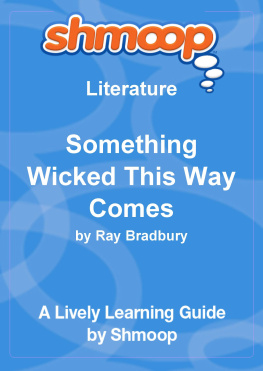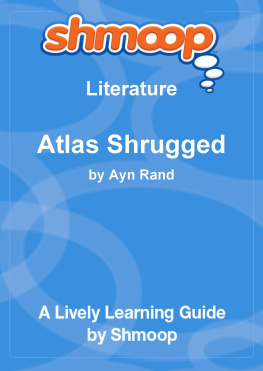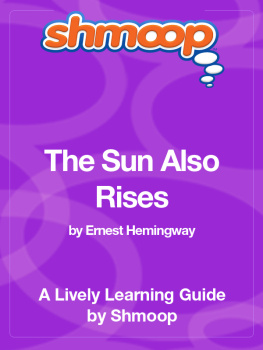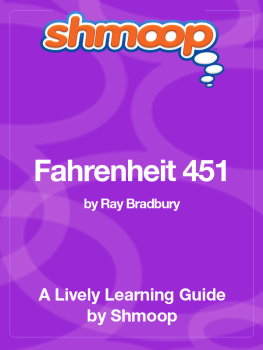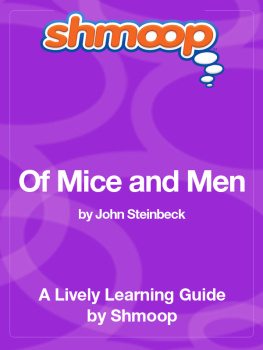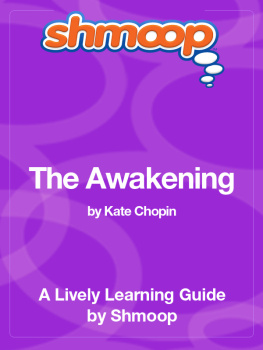
Table of Contents
In a Nutshell/Overview
Something Wicked This Way Comes is a modern horror story focused on two thirteen-year-old boys who uncover menacing secrets at the carnival that has arrived in town. It was published in 1962 by American writer Ray Bradbury. Although most famous for his science fiction work (think Fahrenheit 451 or The Martian Chronicles), Ray Bradbury made a significant dent in the horror genre with Something Wicked, influencing later masters of the genre like Stephen King. He also made a significant cultural impact; the number of TV shows and songs that reference his novel is surprisingly large (we've got episodes of South Park ("Something Wall-Mart This Way Comes"), The Simpsons, and Doctor Who just to name a few). This popularity was no doubt escalated by Disney's 1983 movie adaptation of the novel.
Bradbury has a knack for writing about adolescents, and Something Wicked is as memorable as a coming-of-age story as it is as a horror novel. In this way, it stands in parallel to Bradbury's 1957 novel, Dandelion Wine. Both novels take place in the fictional Green Town, Illinois. Both feature two young boys (though not the same characters) on the cusp of adolescence. Both are written in a sort of magical realism, influenced by a young, imaginative way of looking at the world. The difference is that Dandelion Wine takes place in the summer and is a light, happy novel, while Something Wicked This Way Comes takes place in the autumn and is dark and eerie. It's interesting to read these novels as a pair for precisely this reason.
Why Should I Care?
Reasons to Enjoy, Love, or Otherwise Care About
Something Wicked This Way Comes:
- Who doesn't love a scary story? If you like Edgar Allan Poe, Tim Burton films, and anything from slasher flicks to the best of psychological suspense, you'll enjoy the spine-chilling fun to be had courtesy of Ray Bradbury.
- The title comes from Shakespeare. Need we (a hopeless bunch of Bard-lovers) say more?
- [Applicable if you're in the twelve to fourteen-year-old boy range]: Bradbury totally gets you. Main characters Will and Jim embody all the twelve-year-old boy stuff. Their way of looking at the world shapes the novel, from its words to its very story. Bradbury's brand of scary comes from the imagination of a twelve-year-old boy.
- [Applicable if you are NOT in the twelve to fourteen-year-old boy range]: Bradbury totally gets what it's like to be a twelve to fourteen-year-old boy. (Almost as if he was one at some point!) Something Wicked This Way Comes isn't just a supernatural tale of spooky fun, but a tribute to that very special time in a guy's life. If you remember what it was like to be that age, the novel takes on the tone of nostalgia. If you never were a twelve-year-old boy (yes, ladies, this book is for you too), then consider this a glimpse into relatively unknown territory. A vivid, fun, spooky glance.
What's Up With the Title?
Like so many good things, the title of Bradbury's novel comes from Shakespeare. In Act 4, Scene 1 of Macbeth, one of the witches in the play exclaims:
By the pricking of my thumbs,Something wicked this way comes. Enter Macbeth, who has now been singled out as wicked. This couplet is referenced in Chapter 37 of the novel as the only explanation Charles Halloway can give to himself for his steadfast belief in the boys. In keeping with a theme developed through the novel, it is Charles's body that tells him something is wrong.
In this novel, the "something wicked" that comes to quiet Green Town, Illinois is a carnival of freaks. Its menacing nature is evident from their first arrival at three in the morning that sends the two boys Will and Jim into a frenzy of fear. Rather than see the carnival and its freaks as directly embodying evil, however, we would encourage you to think about how the carnival speaks to the dreams and temptations that exist in all our hearts. In other words, the carnival does not exist apart from human communities, but thrives
on them. Its wickedness stems from its ability to twist dreams into nightmares.
We also feel obliged to mention the particular beauty and neatness of the lines form a poetic standpoint. The two lines are each seven syllables and follow a stressed/unstressed rhythm (otherwise known as a trochaic rhythm). This pattern is particularly ominous because of its heavy beat - you can think about footsteps coming to get you in the night. (Read more about this writing style in our guide to
Macbeth.)This is in keeping with both the general style and tone of the novel - check out those discussions in this Shmoop guide for more.
What's Up With the Ending?
"Last one to the railroad semaphore at Green Crossing is an old lady!" (54.139)
With that triumphant shout, Jim and Will are off running into the night, and Will's father hesitates only for a moment before racing after them. Despite his 54 years of age, Charles Halloway reaches the semaphore at the same instant as the 13-year-old boys, and "the three of them together left the wilderness behind and walked into the town" (54.49). They have vanquished evil; they are ready to go home.
This ending is multi-layered, just like your last birthday cake. We'll start with all that beautiful icing, which in this case is the triumph of good over evil. All the carnival freaks have scattered, Mr. Dark is dead, and the carousel is broken (hopefully forever). Digging deeper here, what's more interesting is the transformation in Charles Halloway. The middle-aged, depressed janitor is gone. Once a remote and distant father, Charles becomes at the end of the novel an equal and a playmate. He shows us that, sometimes, age really is just a number.
The bottom layer of your cake, the part that you really want to chew over, are the questions this ending leaves for us. The ending shows Jim, Will, and Charles as perfect equals (they all reach the semaphore at the same instant) and as very happy ("exultant"). Yet, just moments ago, Jim and Will were engaged in an enormous fight about the desirability of growing up. Does this ending mean that Jim has gotten over his desire to play Peeping Tom? Similarly, not long ago Charles Halloway was overcome by the old age presented in his own reflection. Does this ending mean Charles has gained a second youth? Like so many happy endings, the end of
Something Wicked This Way Comes seems a tad too good to be true.
Writing Style
Heavily Metaphoric, Sensual, and Poetic
Bradbury offers us richly layered prose that displays a slight obsession with metaphor. Jim is a kite, Will is earthbound. Will is a white rabbit. Will and Jim are tomcats. The library is not just a hushed, dark building full of books, but a "land bricked with paper and leather" where "anything might happen," where "a million folk ran toting canons, sharpening guillotines; Chinese, four abreast, marched on forever" (2.18). Nor does Bradbury's lush, imaginative style in this novel happen by chance. Rather, it invokes the worldview of thirteen-year-old boys for whom the world is alive with possibility and adventure.
Tone
Adolescent Beliefs - Gee Whiz, Pa! Also, rather dark and eerie.
Bradbury takes on the world from a kid's point of view in this novel. Many of the supernatural horrors that Will experiences, for instance, can easily be chalked up to the play of shadows at night, as when he watches the train pull into town, or the magic acts of a professional traveling carnival, such as when Mr. Electrico is being zapped. In this novel, however, it becomes rapidly clear that dark and mysterious deeds are actually underfoot. The Dust Witch flies in a balloon to mark Jim's roof with silver slime. Miss Foley actually goes missing. Scary as these events are, we do see them as the kind of story a thirteen-year-old boy would tell to scare his buddies around a campfire. The horror, for instance, of

